Greece
Minoan Palatial Centres
Community Perspective: the Palace of Knossos is the main draw (also for the beach crowds of Crete), but the lack of access to several areas is annoying. A visit to the Heraklion Archaeological Museum is also essential to see the original frescoes. Among the other palaces, Phaistos is recommended for its setting.
Site Info
Official Information
- Full Name
- Minoan Palatial Centres (ID: 5860)
- Country
- Greece
- Status
-
Nominated 2025
Site history
History of Minoan Palatial Centres
- Criteria
Links
- UNESCO
- whc.unesco.org
All Links
UNESCO.org
- whc.unesco.org — whc.unesco.org
News Article
- May 19, 2025 greekreporter.com — Iconic Dolphin Mural Collapses at Knossos Archaeological Site
- Sept. 5, 2024 greekreporter.com — Greece Revamps Knossos Archaeological Site
Community Information
- Community Category
- Archaeological site: Classical (other)
- Secular structure: Military and Fortifications
Travel Information
Recent Connections
News
- greekreporter.com 05/19/2025
- Iconic Dolphin Mural Collapses at …
- greekreporter.com 09/05/2024
- Greece Revamps Knossos Archaeologi…
Recent Visitors
Reserved for members.Community Reviews
Show full reviewsI visited Knossos and Malia during my weekend on Crete. Just like any site covered by Solivagant, the info about OUV and history is already covered, so I focus on the visitor experience in 2025 during what seems to be already main season (May).
Knossos
Knossos is just a few minutes outside Heraklion. I arrived there at 07:50, 10 minutes before the palace opened.
Be aware that this seems to be the main attraction on Crete. Tours are offered from every beach location and from every cruise ship.
3 tour buses arrived at the exact same time and when I reached the entrance, 1 entire tour bus was already waiting in line. Luckily these tours don’t have to buy individual tickets (outrageous 20 Euros), so I could walk passed them to the counter. There are ticket vending machines outside, but none of them worked.
I managed to pass by the group again as they stared at the bust of Arthur Evans and had the whole palace almost to myself. But when I left at 08:45, the place was packed. There was an infinite line to get into the throne room and the main square looked like a festival ground. I counted no less than 19 buses on the parking lot at not even 9am. According to their website, Knossos crossed the 1 Mio visitors per year mark. So at least during main season I suggest you be there at opening time or your visiting experience will be tainted.
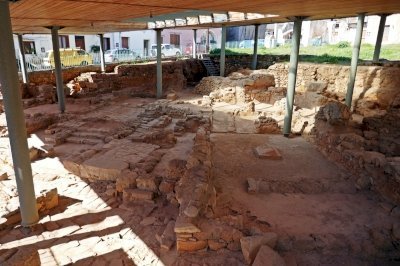
We visited 3 of the 5 sites during our visit to Crete in Feb 2022.
Our first introduction to Minoan ruins was actually at Phaistos. It was an easy hour drive from Heraklion first thing in the morning and we had the site to ourselves. As previously mentioned the location is fantastic with great views in all directions. The site is in a state you'd expect when visiting "ancient ruins", the form is there and you can fairly easily make out all the structural elements though the only remaining artifacts are a few storage jars (pithoi) scattered about at the ends of various chambers. This site is worth a visit for anyone seriously interested in the Minoans and if it weren't part of a serial site that looks a long way off from getting inscribed could easily get in on its own.
From Phaistos we drove back to Knossos. I think visiting them in this order helped us to not find Phaistos as underwhelming as others have because it is significantly smaller than Knossos. For us it might have been the opposite as I found Knossos a little strange. It had the second highest entry fee we found in Greece (after the Acropolis) which felt unjustified. The reconstructions can be a little distracting and the story of Evans has been well told elsewhere but what I found more frustrating was that I felt like the info signs were more about the history of Evans and his work there …
Keep reading 0 comments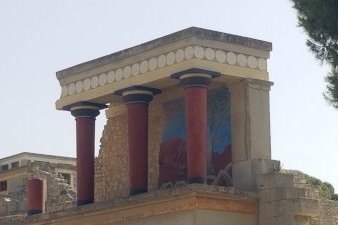
Can you believe Knossos is still not world heritage? Can you believe none of the sites in Crete are world heritage? Can you believe Greece favors Spinalonga, a leper colony, over this?! Finally, can you believe the entrance is €15 or €16 with the museum! (also can you believe an elderly Israeli couple tried to get a free entry due their nation being in the Eurovision contest lol)
Unfortunately without a guide there is very little to see at the site. Sure you see the famous half broken fresco of the minotaur, the red columns, lots of crumbled remains of a once fancy palace. You get to see more statues in the museum which in the end is a more worthy visit. There are other places on the tentative list for this entry but I would consider Knossos the main one.
My main problem with the site is the lack of access to several areas. Unlike Pompeii where there is still clearly work done, here places are just off limits and you can glance at it from far away. Great site, bad presentation. Recommend you to look up the history yourself before visiting.
Keep reading 0 comments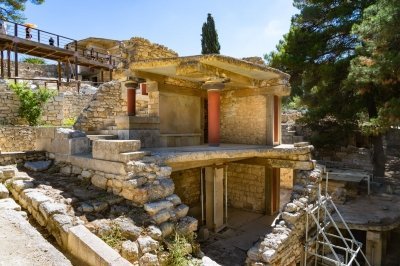
During a stay on Crete in the summer of 2018 I visited two of the properties of this serial site. One of them, Knossos Palace is the most visited tourist attraction on all of Crete.
Although British archaeologist Arthur Evans, who excavated Knossos in the early 20th century, firmly placed the palace as the residence of the mythical King Minos (and named the whole civilization after him), you will not find any remains of the Minotaur’s Labyrinth here. Instead, among the ruins of stone walls and buildings, you will find partial recreations of structures as they existed thousands of years ago. While the relatively young age of these recreations is obvious to the naked eye, they are considered very faithful facsimiles. There are a couple of interior spaces among the recreations as well as a few paintings – none of which are originals, of course – which enliven the scene a lot.
All of that makes Knossos almost “livable”, especially compared to a site such as Phaistos (sometimes transliterated into Latin alphabet as Faistos). The two are contemporaries, although Phaistos Palace came to ruin and disuse a few centuries earlier than Knossos, around 1450 B.C. There are no reproductions at Phaistos, only whatever has been excavated in the shape that it was found. An expert in archaeology may actually find that more authentic and rewarding. For a layman visitor, an uncommon power of imagination is required to discern anything more than terraces of piles of rocks, no matter …
Keep reading 0 comments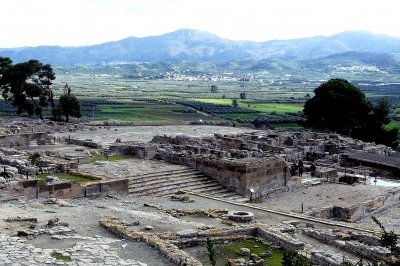
In Nov 2015 I reviewed our visit to Knossos (below). In Dec 2018 we “found ourselves” in Crete yet again and visited a further 3 of the 5 “Minoan Palatial Centres” (as well as re-visiting Knossos and the fabulous Heraklion Archaeological Museum) - perhaps a bit of “overkill” on the Minoan front, but providing an opportunity to compare and contrast the 4 locations and, potentially, to reassess the chances of any nomination and its likely success.
It is worth mentioning perhaps that there are a large number of archaeological sites on Crete which date back to the civilisation now called “Minoan”. They are signposted everywhere when one drives around! For instance we also visited the site of a Minoan “town” now called Gournia. This was one of the 5 sites included in the original T List entry of 1985 (see my earlier review below from Nov 2015 for a history of changes to this T List entry which resulted first in Knossos standing alone and then a revertion to 5 sites but with Gournia replace by Kydonia). It was excavated around 1903 and contains what the archaeologists titled a “Palace complex”. It was important enough to have been called the “trading centre of the island in Minoan times” (Wiki) - but it is significantly smaller than the 3 largest and most famous “palace” sites on Crete. These are all identifiable, according to archaeologists, as being relatable to the later Homeric myth regarding …
Keep reading 0 comments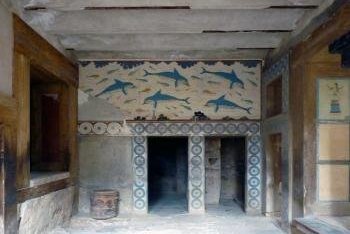
Knossos was placed 5th in our list of “Top 50 Missing” and was among my personal selected 20 so, when we visited it in Oct 2015, it was with particular interest to try to establish why it still languishes on the T List, whether this is likely to change and whether we agreed with the “failure” (so far) to inscribe!
In preparation, I investigated the history of the site’s attempts to gain inscription. Knossos was placed on Greece’s T List in 1985 as part of "Sites Minoens – Cnossos, Phaestos, Mallia, Gournia, Zakros". I can find no evidence of any “formal” nomination ever having been made. However local newspapers on the Web indicate that unsuccessful "attempts" were made around 2003 and again in 2009 – I can only assume that these were “informal” via discussions with ICOMOS etc rather than full nominations. These articles indicate problems with illegal construction and general management and preservation issues.
By 1996 the site had been altered to one with the rather strange title of "Knossos #" where "#" = "Site has alternate names" (what this meant isn't clear) and a description containing Knossos alone. Then, in 2014 the title and description were altered again to “Minoan Palatial Centres” with 4 of the earlier 5 sites included and Gournia replaced by Kydonia. The impetus for this "change back" to multiple sites with an emphasis on their being "Palatial" isn't clear, but this report titled "Crete Wants …
Keep reading 0 comments